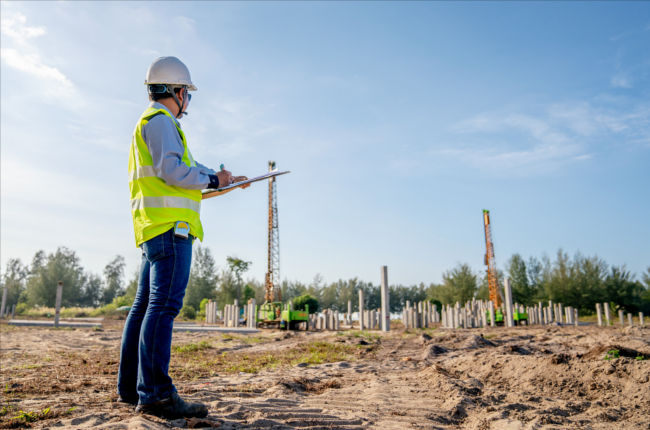Top Methods for Geotechnical Engineers to Enhance Soil Security in Building Projects
Wiki Article
The Interdisciplinary Approaches in the Geotechnical Sector: Connecting the Gap In Between Engineering, Geology, and Environmental Scientific Research for Optimum Task End Results
The combination of design, geology, and ecological science within the geotechnical market is not just beneficial; it is critical for attaining optimum task outcomes. What techniques might emerge to facilitate this essential collaboration and boost the efficacy of geotechnical techniques?Importance of Interdisciplinary Collaboration
The relevance of interdisciplinary partnership in the geotechnical industry can not be overstated. Efficient geotechnical tasks call for the integration of varied know-how from numerous fields, consisting of design, geology, and environmental scientific research. This cooperation ensures that all aspects of a job are thought about, causing thorough remedies that attend to complex difficulties.When functioning in seclusion,Interdisciplinary collaboration fosters technology by making it possible for experts to share insights and techniques that may not be evident. By leveraging the strengths of multiple techniques, teams can identify prospective risks, optimize style processes, and enhance the sustainability of geotechnical projects. Such partnership promotes an all natural understanding of site-specific conditions, which is crucial for exact analysis and decision-making.
The complexity of geotechnical tasks demands a collaborated strategy to analytical. Inevitably, interdisciplinary collaboration is vital for progressing finest practices and achieving excellence in the geotechnical market.
Key Roles of Each Technique
Partnership among numerous disciplines is not simply helpful; it is vital for the successful execution of geotechnical jobs. Each discipline-- design, geology, and ecological scientific research-- plays an unique yet interconnected role that adds to forecast efficacy and sustainability.Geotechnical engineers are primarily in charge of making foundations and ensuring architectural integrity. They examine soil and rock buildings to assess load-bearing capabilities, giving essential information for safe building and construction methods. Their proficiency enables the solution of ingenious options to complex obstacles.

Environmental researchers assess the possible influences of construction on ecosystems and water resources. They perform environmental assessments and develop reduction strategies to decrease unfavorable impacts. By incorporating eco-friendly factors to consider, they make sure compliance with guidelines and promote sustainability throughout the task lifecycle.
Situation Studies of Effective Assimilation
Effective combination of geotechnical self-controls can be exemplified with different situation research studies that highlight the performance of teamwork in resolving complex design challenges. One significant example is the building of the Hong Kong-- Zhuhai-- Macau Bridge, where a collaborative method including geotechnical engineering, geology, and environmental scientific research was important. Geologists and engineers operated in unison to evaluate the seabed problems and optimize the foundation design, making sure security and decreasing ecological impact.Another impactful case is the renovation of slope stability in the San Francisco Bay Location, where an interdisciplinary team integrated geotechnical analysis with ecological assessments. By incorporating hydrological studies engineer of record and geological studies, the team properly recognized possible landslide risks and carried out reliable mitigation steps, enhancing safety and sustainability.
In addition, the redevelopment of Brownfield sites typically calls for a multidisciplinary technique. In one instance in Chicago, cooperation among geotechnical designers, environmental scientists, and city organizers led to the successful removal of polluted soil, enabling for the risk-free transformation of the website into a community park. These study illustrate that interdisciplinary cooperation not only addresses technical challenges yet likewise cultivates innovative remedies that benefit both communities and jobs.
Difficulties in Multidisciplinary Projects

Additionally, coordinating routines and process amongst numerous teams can be bothersome, especially when each discipline has distinct job milestones and deliverables. This imbalance can result in delays and increased expenses. The challenge of resource appropriation likewise impends big; making sure that specific know-how is offered at vital points requires cautious preparation and insight.
Lastly, governing conformity postures one more substantial challenge. Each technique may deal with different regulative frameworks, and aligning these requirements to fulfill project purposes can be time-consuming and complex. Attending to these challenges demands solid leadership and efficient interaction approaches to promote collaboration and guarantee that multidisciplinary groups work cohesively towards shared goals.
Future Trends in Geotechnical Practices
As the geotechnical sector advances, arising patterns are reshaping methods to attend to the challenges dealt with in multidisciplinary projects - engineer of record. One significant fad is the boosted assimilation of advanced modern technologies, such as expert system and artificial intelligence, right into geotechnical evaluation and design. These innovations improve predictive modeling and risk analysis, enabling engineers to make even more educated choices throughout the job lifecycle
Furthermore, the adoption of electronic doubles and real-time surveillance systems is becoming more common. These devices assist in ongoing evaluation of dirt conditions and architectural performance, enabling prompt interventions when problems emerge.
Verdict
Finally, the combination of design, geology, and ecological scientific research is important for attaining ideal results in the geotechnical market. Interdisciplinary collaboration cultivates technology, improves problem-solving abilities, and lines up technical requirements with environmental sustainability. Successful case researches highlight the advantages of this method, while acknowledging the obstacles encountered in multidisciplinary tasks. Looking ahead, embracing these joint techniques will be necessary for navigating future trends and advancing the area of geotechnical design.The assimilation of design, geology, and ecological scientific research within the geotechnical sector is not simply helpful; it is vital for achieving optimal project outcomes. Efficient geotechnical tasks need the assimilation of varied experience from numerous areas, including engineering, geology, and environmental scientific research.Navigating the complexities of multidisciplinary projects in the geotechnical industry presents several substantial obstacles.As the geotechnical market develops, arising trends are reshaping techniques to deal with the obstacles encountered in multidisciplinary tasks. Geotechnical designers are significantly collaborating with environmental researchers to guarantee that tasks line up with sustainability objectives and comply with regulatory demands.
Report this wiki page